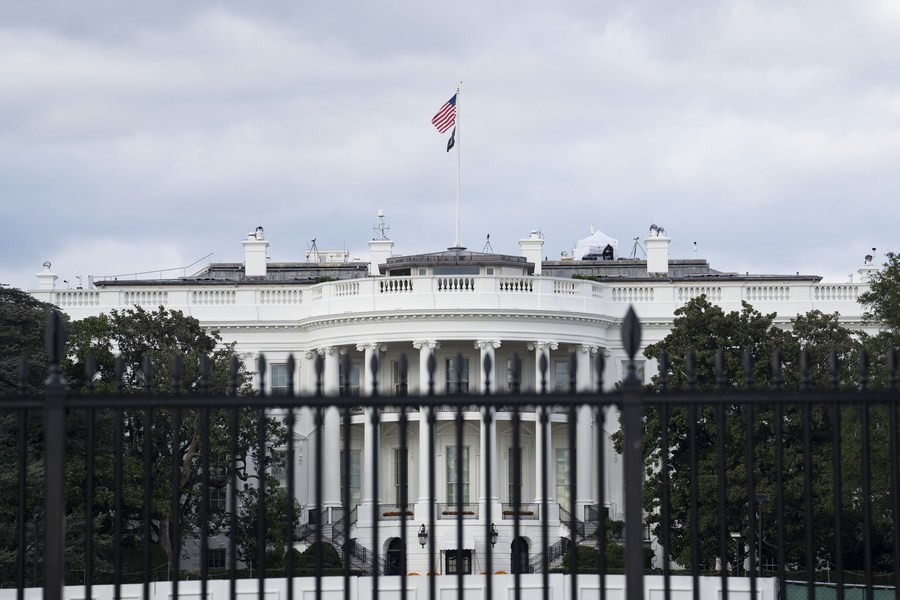More than 37 million people live in poverty in US, data shows
By BELINDA ROBINSON in New York | chinadaily.com.cn | Updated: 2023-08-09 11:00

More than 37.9 million people in the United States live in poverty, as many struggle to afford basic necessities such as food, healthcare and a permanent place to live, figures show, despite the country being the richest nation in the world by gross domestic product.
The stark figures from the US Census Bureau show that in 2021, 11.6 percent of the entire population was in poverty. Out of that number, the majority, 56 percent — or 21.4 million, were women of all races, along with 16.9 percent of children.
Between the ages of 25 and 34, women are 69 percent more likely than men of the same age to live in poverty, data from The Center for American Progress, a nonpartisan policy institute found. More women than men over age 75 also face financial hardships.
While poverty affects people in towns and cities nationwide, it is particularly bad in Appalachia, the Tobacco Belt of Virginia, the Carolinas, the Cotton Belt in the South, and South Texas, where it affects multiple generations of families.
Since 1963, federal guidelines have determined poverty for a family of four as those who live off less than $25,700 a year. Among single adults, it is those who earn less than $14,580 a year. These guidelines compare a person's pretax income against three times the minimum cost of food.
Jeff Smith, senior manager of communications for North Texas Food Bank, told China Daily: "Nearly 700,000 North Texans are unsure of where their next meal will come from. Tragically, this includes more than 250,000 children … in our region."
In 2011, the Census Bureau updated the way it identifies those impoverished to include not just the cost of food, but also their household size, cost of utilities, clothing, government programs and where people live. This new guidance is dubbed the "Supplemental Poverty Measure (SPN)".
Meanwhile, internationally, the World Bank measures poverty as those who live on less than $2.15 per day. At least 1.5 million Americans are thought be in that category, according to the 2016 book $2.00 a Day: Living on Almost Nothing in America by sociologists Kathryn Edin and Luke Schaefer.
In rural communities and big cities, those on fixed incomes, senior citizens and workers earning a minimum wage are among those struggling.
City Relief, an organization that was founded in 1989, provides meals from local mobile vans in several locations across New York and New Jersey for workers on low wages, for the homeless, and anyone who needs a meal.
"Often people will come to us just because the rent doesn't allow them enough money to eat," Corey Hayes, creative director for City Relief told China Daily. "Many people have less money to spend on food, many rely on these meals as their only meal of the day."
In March, cuts to the federal government's food assistance program, the Supplemental Nutrition Assistance Program, or SNAP, squeezed budgets further — leaving eligible households with $95 less per month.
It affected more than 30 million people in 32 states and the District of Columbia, according to the US Department of Agriculture (USDA), which runs the program.
"When family budgets are squeezed, we tend to see neighbors seeking food assistance because food is generally their most flexible expense and is the most readily available form of charitable support," Smith said.
Across the country, the type of households affected vary. The rate of poverty for single-parent families with no husband present was 24.9 percent. When the single household had no wife present, it was 12.7 percent. But the poverty rate for married couples in 2018 was lower at 4.7 percent.
The highest poverty rate by race was among Native Americans at 25.4 percent, black people at 20.8 percent, Hispanic people at 17.6 percent, white people at 10.1 percent and Asian people at 10.1 percent, according to 2018 Census data.
President Joe Biden has prioritized "making historic investments to support underserved communities … across the nation in health, education and economic opportunity", the White House said.
In March, the federal budget pledged $341 million for the Community Development Financial Institutions Fund which provides "historically underserved and often low-income communities access to credit, capital, and financial support to grow businesses, increase affordable housing, and reinforce healthy neighborhood development".
A report by the Economic Innovation Group believes that federal policy must "evolve again to support America's most left behind communities. It states that "the core economic development challenge in persistently poor communities is to stimulate private economic activity".
























